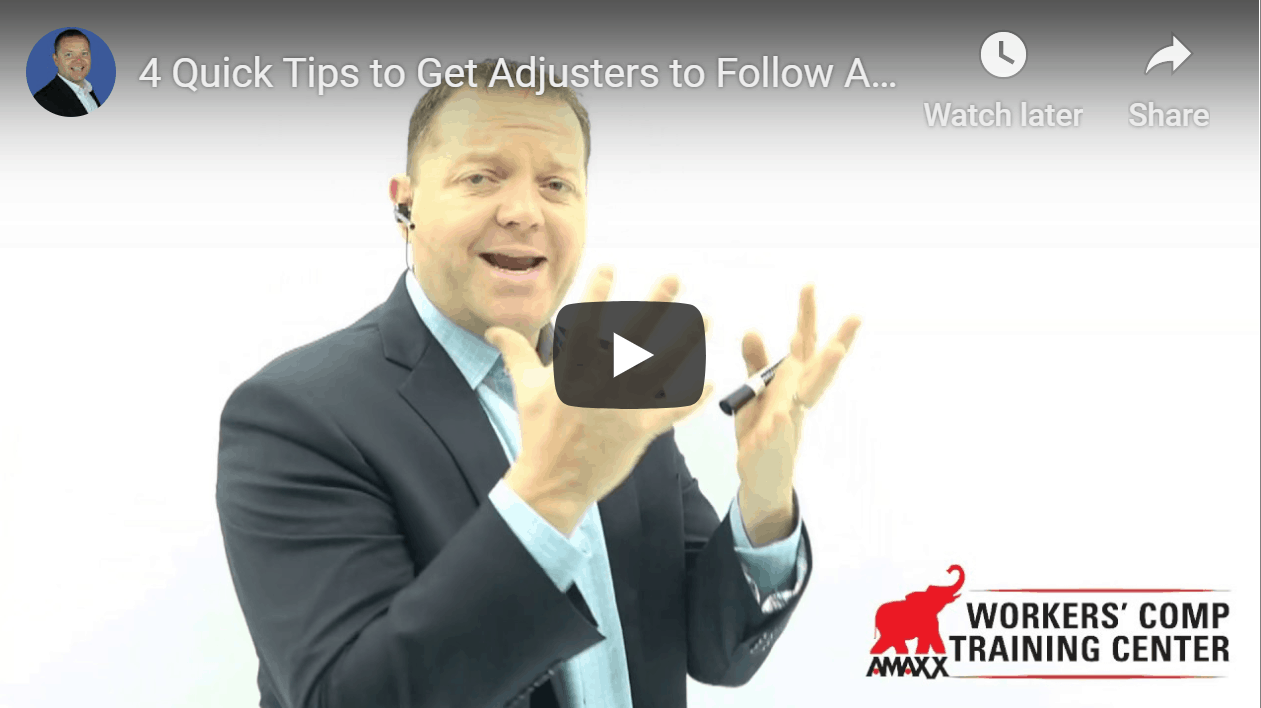
If you’ve ever been intrigued by police investigations in TV shows or detective novels, you might want to use that enthusiasm to investigate workplace injuries. Approaching a workers’ comp claim investigation claim in ‘detective’ mode will lead to better results; meaning, reduced costs and superior outcomes for injured workers.
The Workers’ Comp Claim Investigation
The ultimate goal of managing a workers’ compensation claim is to help the injured worker recover and get back to work as soon as possible, without the payer spending unnecessary costs. But often there are many gray areas to a claim. Determining exactly what happened and, therefore, what should be covered by workers’ compensation can be difficult.
Investigating a claim should uncover as many details as possible. Employers/payers can get all the information they need by implementing a precise system that kicks in immediately after an injury occurs. At the very least it should include:
Click Link to Access Free PDF Download
“13 Research Studies to Prove Value of Return-to-Work Program & Gain Stakeholder Buy-In”
-
The Basics
The workers’ comp claim investigation process should begin with statements from the employee, employer, and any witnesses. There should be separate forms for each which should have open-ended questions, rather than boxes to check.
Additionally, there should be a separate attachment for details on each form. A form from a witness that says, ‘Joe slipped and hurt his back,’ really doesn’t reveal anything and won’t help determine whether and to what extent the claim is compensable.
The essential pieces of information that should be included about the injured worker and the incident include:
- Date of birth
- Name of the employee
- Social security number
- Average weekly wage
- Date of injury
- Date of hire
Too often such information is either not included or is inaccurate.
Another ‘basic’ procedure that makes a tremendous difference in a claim is the way the injured worker is treated. Anyone involved with managing the claim at any point should treat the person as if it is a friend or spouse and approach the employee in the same way as they would want that person treated.
-
Preserve the Scene
Preserving the scene is where reading and watching cases in which detectives try to understand what has happened comes into play. Just as a detective on a case is trying to get to the truth, so too is the employer/payer.
Once an accident occurs, the area should be roped off to whatever extent is possible. If it is an area in which many people are working and is crucial to business operations, this might take some creativity. But the idea is to ‘protect’ any evidence that could indicate what and how the injury occurred.
Looking at the scene might reveal a cause. For example, water on the floor could indicate the worker slipped and fell. Or, there might be evidence that a piece of equipment was faulty, which could result in subrogation from a third party.
A thorough examination of the accident scene may help reveal the mechanism and extent of an injury. That could be advantageous if, say several months later the injured worker claims additional injury from the initial accident.
-
Talk to Others
Witnesses play an important role in a workers’ comp claim investigation. While the injured worker experienced the accident, he may not know exactly how it happened. Someone who saw it might be able to fill in some of the blanks; for example, that a heavy box on an upper shelf fell, triggering the worker’s fall.
Also, identifying all witnesses as soon as an injury occurs prevents ‘new’ witnesses the injured worker may try to bring in later on.
-
Record
While witness accounts of a situation are important, they may not always be reliable. Sometimes what people think they saw or remember may vary greatly from one witness to another. That’s why it’s also important to record the scene in as many ways as possible.
Just as a detective investigating a crime scene might seek out video footage of the area, getting recorded descriptions of the scene can help determine how the injury occurred and can be extremely valuable later on, if the case is litigated.
Video cameras may be present in or near the work area. There may also be video cameras around the building, or even on nearby buildings. The footage may reveal more information about the incident.
If no videos were present in or near the accident scene when it happened, taking a video of the accident area via a smartphone can also help provide information about what may have contributed to the injury. The person filming should also include narration to describe various objects, direction, location, etc.
Photos can also provide details. These can be taken from a distance as well as close up, to get different perspectives and angles.
FREE DOWNLOAD: “13 Research Studies to Prove Value of Return-to-Work Program & Gain Stakeholder Buy-In”
-
Document, Document, Document.
Every step taken during the workers’ comp claim investigation should be written down; from interviews with witnesses and others, to bits of information observed at the scene, and any other potentially relevant information.
Documentation pertaining to maintenance and training schedules and previous corrective actions involving the injured worker should also be included in the investigation materials. Information about prior medical treatment to the injured body part can also be relevant and should be included in the documentation
Conclusion
Conducting a thorough workers’ comp claim investigation provides the best opportunity to ensure the payer covers all of what should be funded and nothing more. It also signals the entire workforce that this is a normal process; meaning a worker will think twice before trying to fake an injury.

Author Michael Stack, CEO Amaxx LLC. He is an expert in workers’ compensation cost containment systems and helps employers reduce their workers’ comp costs by 20% to 50%. He works as a consultant to large and mid-market clients, is a co-author of Your Ultimate Guide To Mastering Workers Comp Costs, a comprehensive step-by-step manual of cost containment strategies based on hands-on field experience, and is founder & lead trainer of Amaxx Workers’ Comp Training Center.
Contact: mstack@reduceyourworkerscomp.com.
Workers’ Comp Roundup Blog: https://blog.reduceyourworkerscomp.com/
©2019 Amaxx LLC. All rights reserved under International Copyright Law.
Do not use this information without independent verification. All state laws vary. You should consult with your insurance broker, attorney, or qualified professional.
















